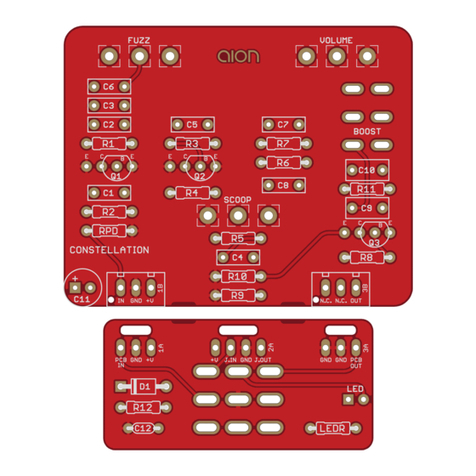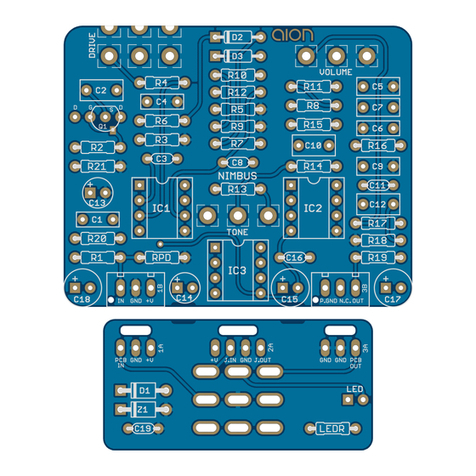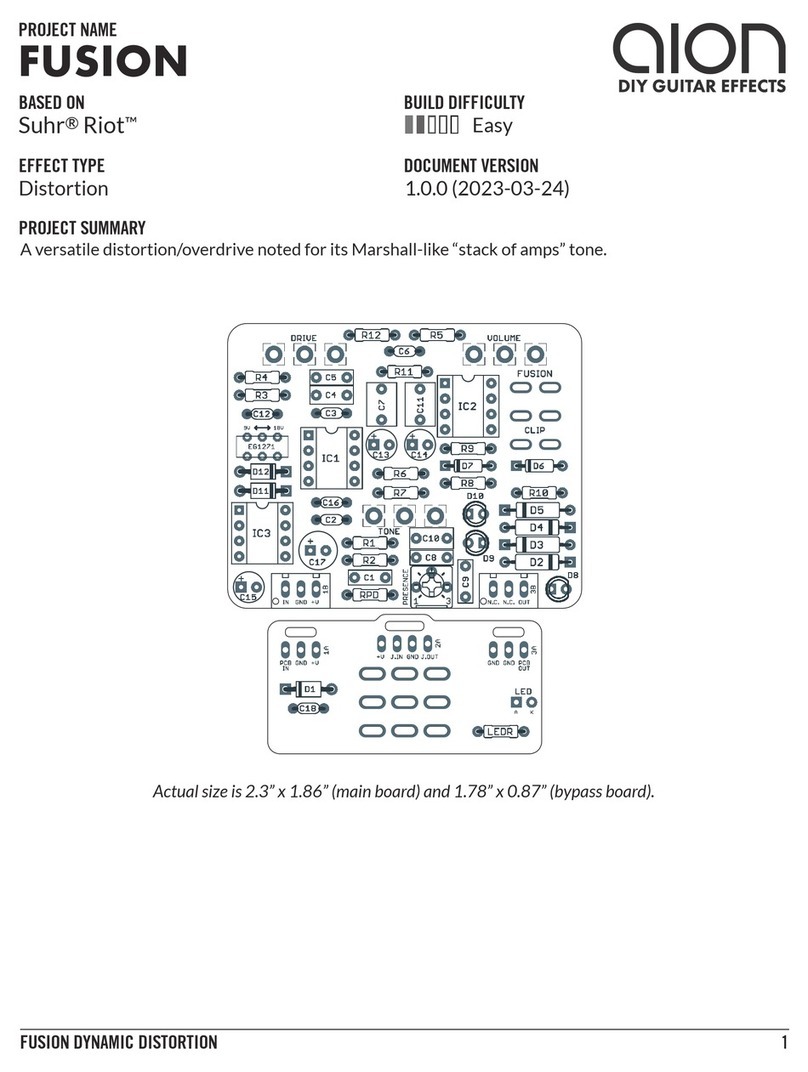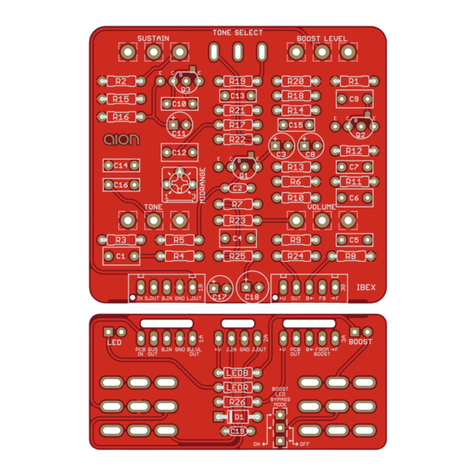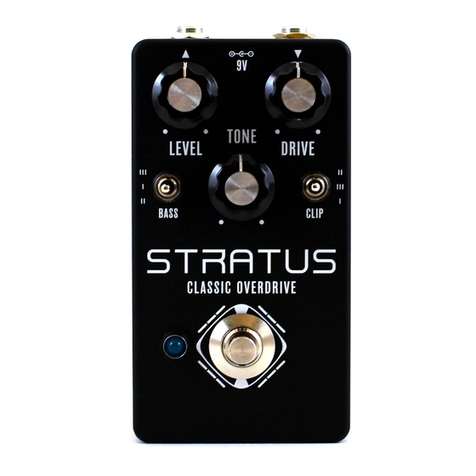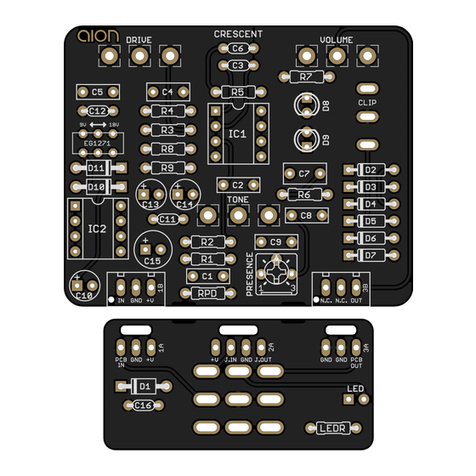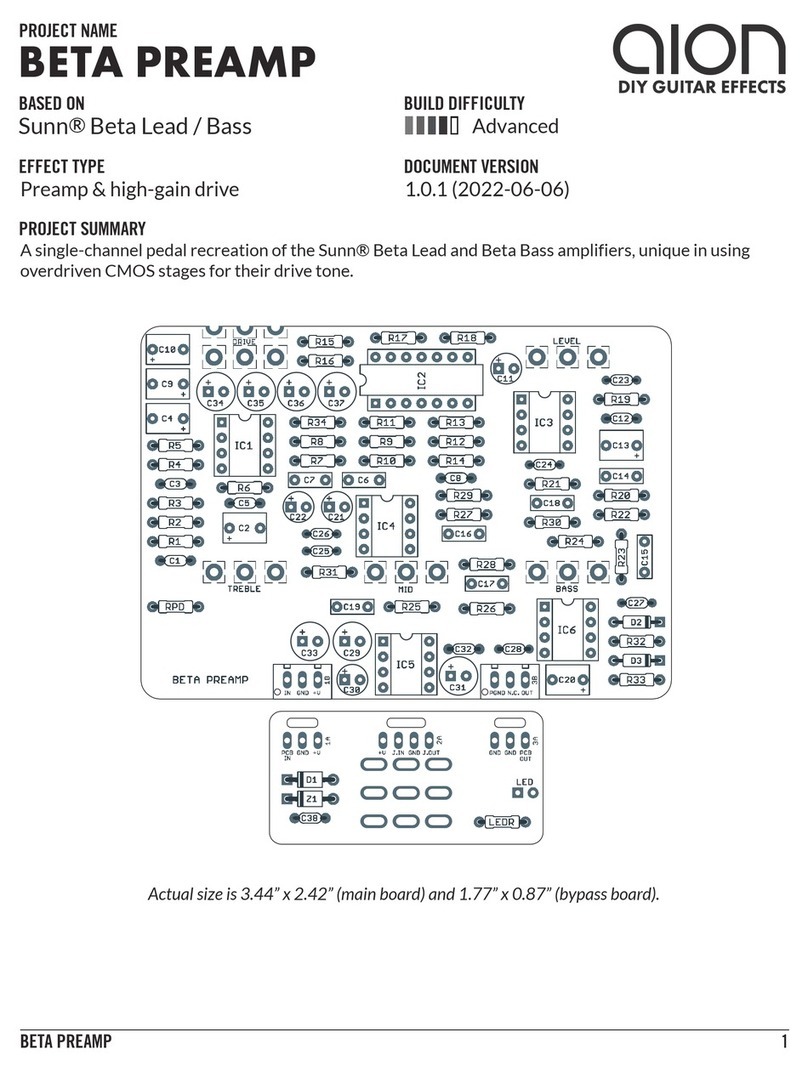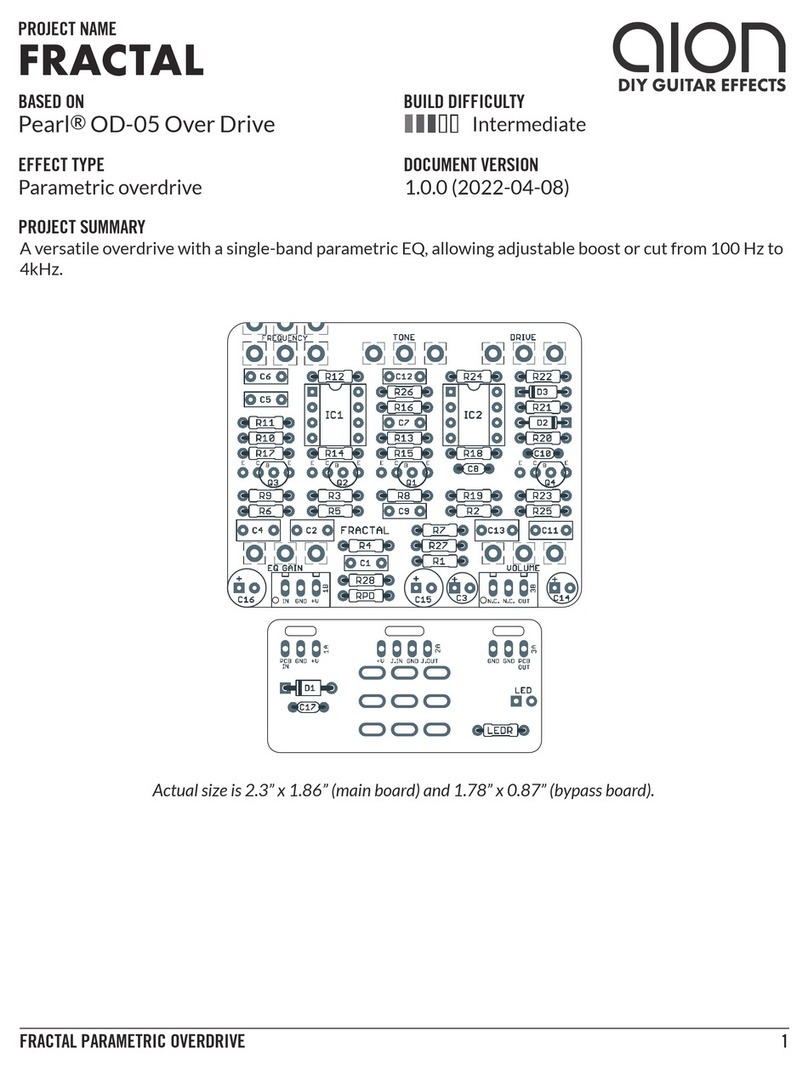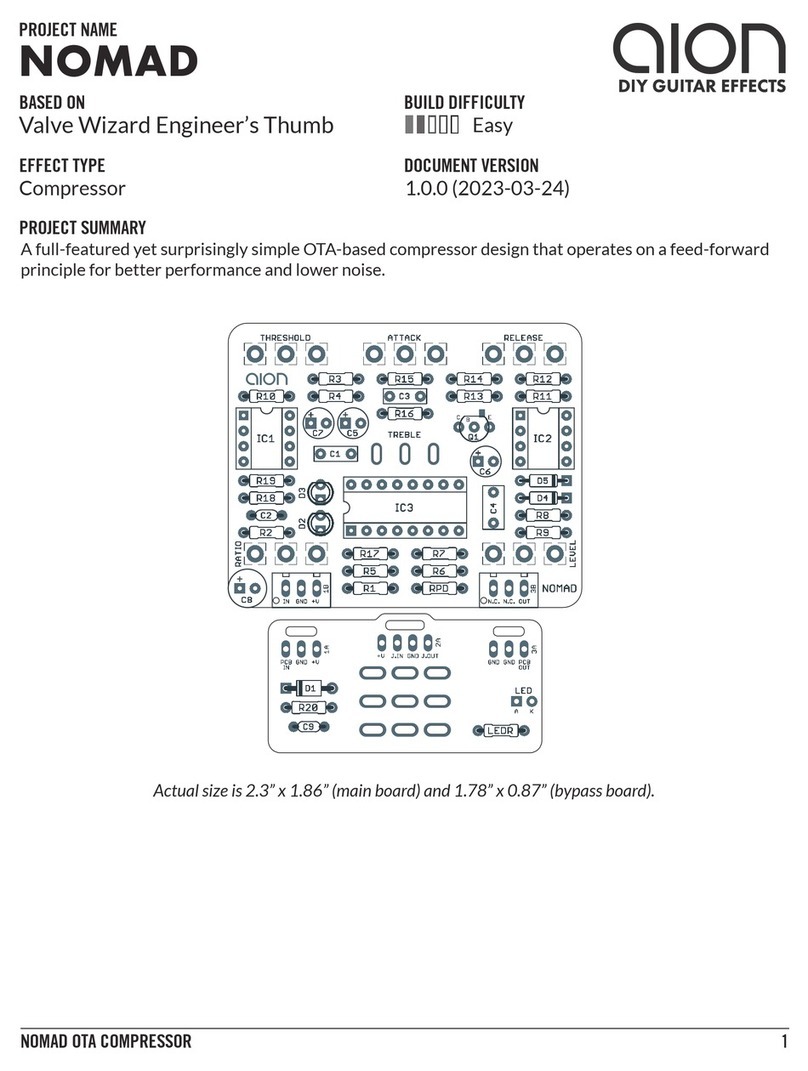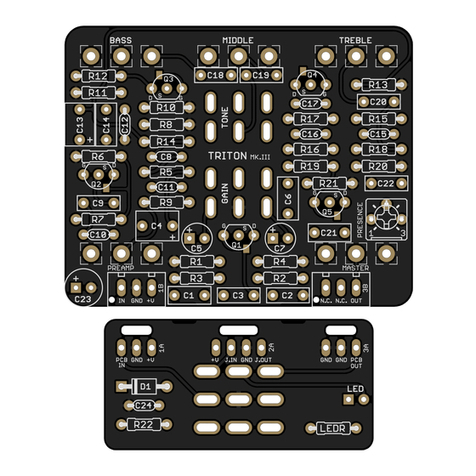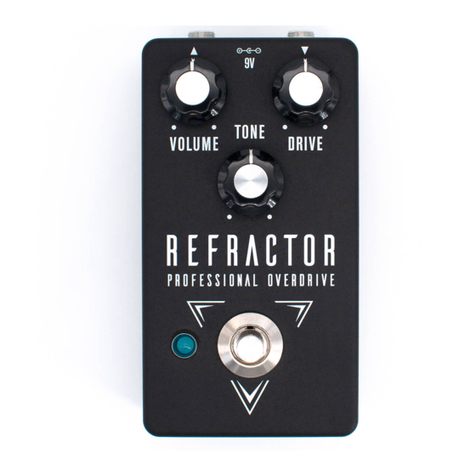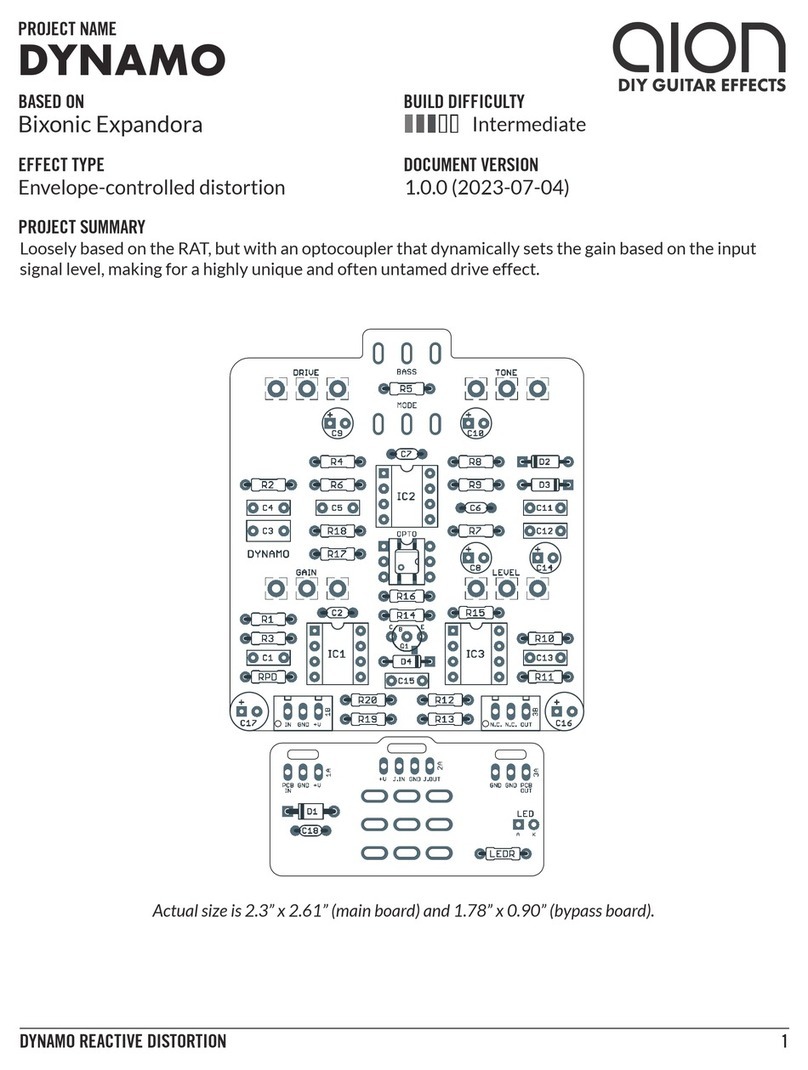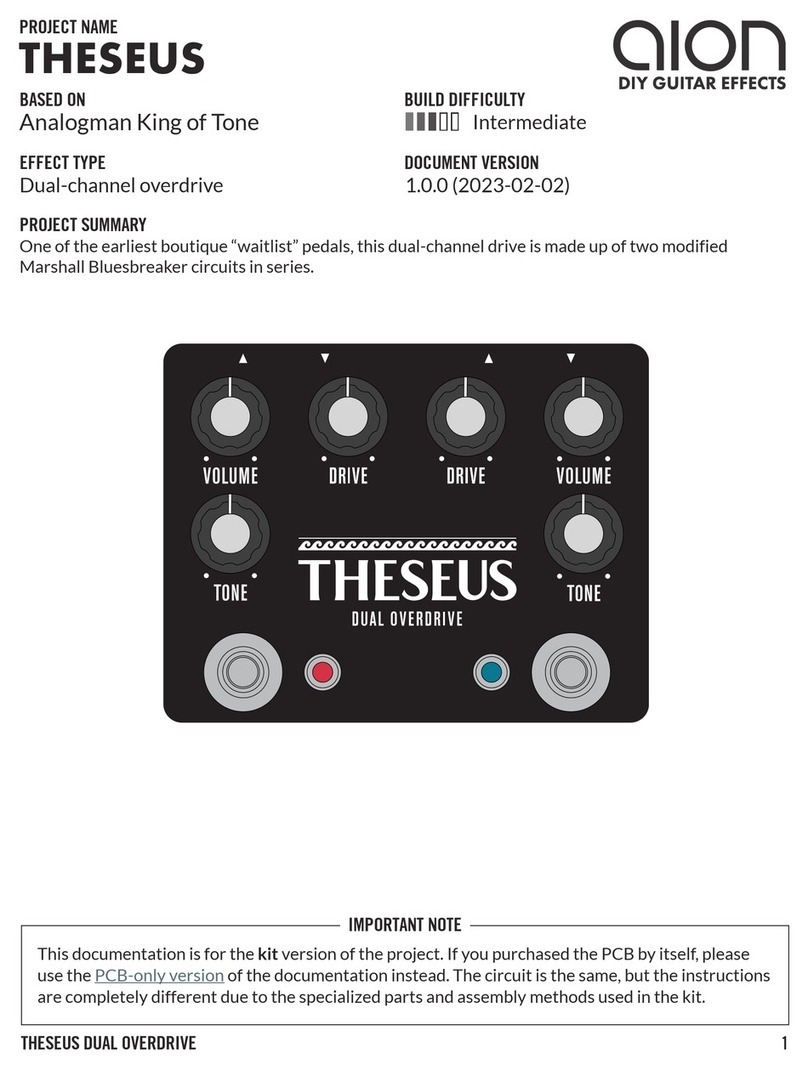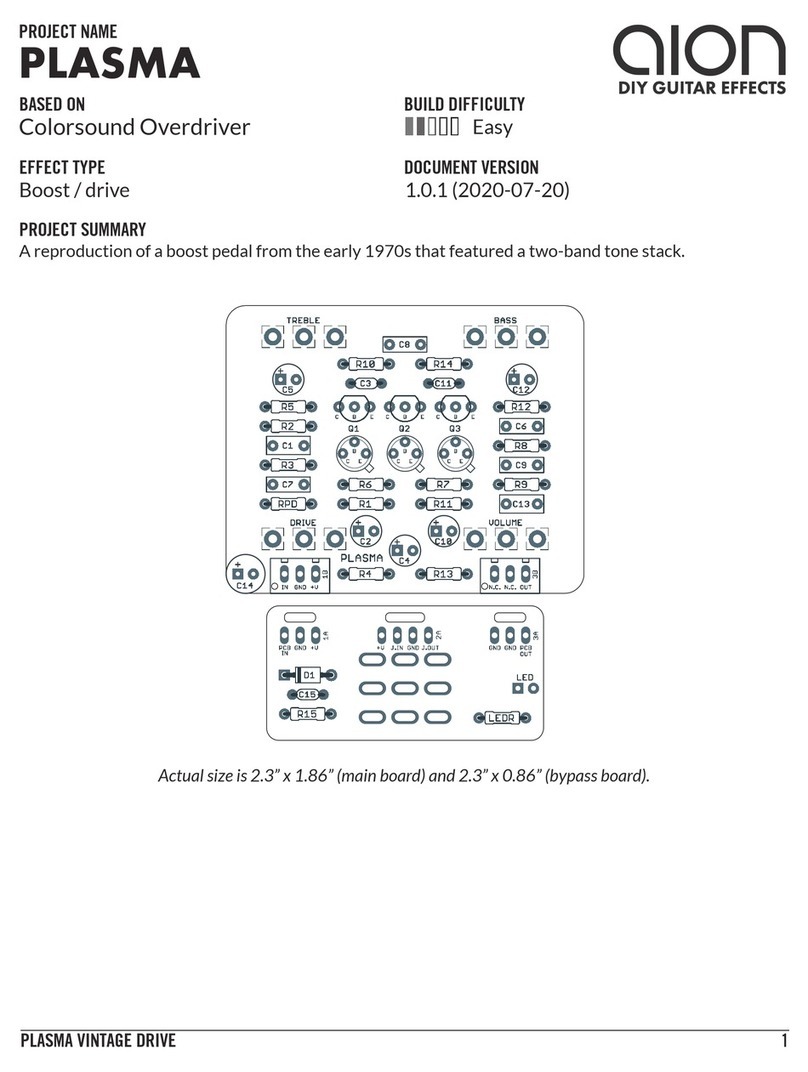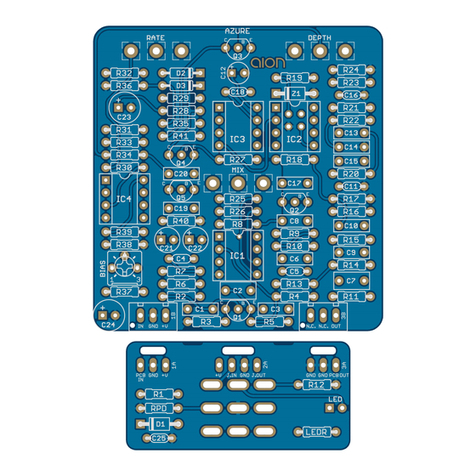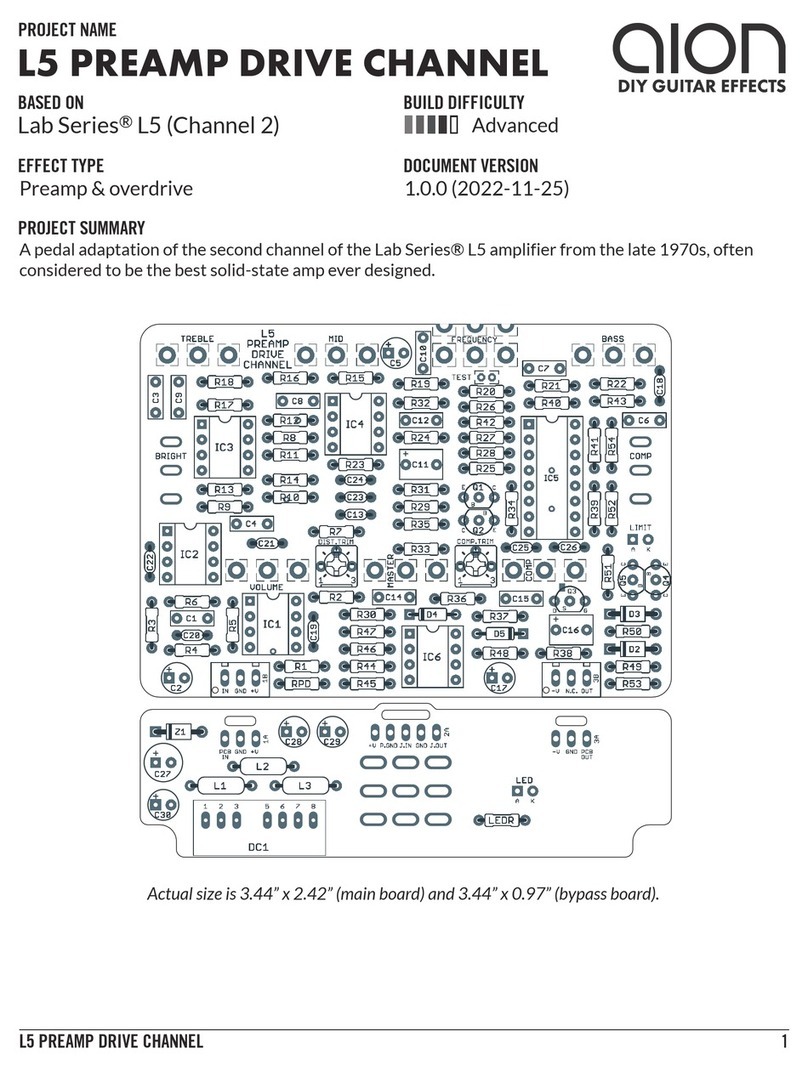
PARTICLE VINTAGE FUZZ 3
PARTS LIST
This parts list is also available in a spreadsheet format which can be imported directly into Mouser for
easy parts ordering. Mouser doesn’t carry all the parts (most notably potentiometers) so the second tab
lists all the non-Mouser parts as well as sources for each.
View parts list spreadsheet →
PART VALUE TYPE NOTES
R1 51k Metal film resistor, 1/4W Albini specs. Use 220k for stock version. See build notes for more info.
R2 91k Metal film resistor, 1/4W Albini specs. Use 20k for stock version. See build notes for more info.
R3 3M9 Metal film resistor, 1/4W Albini specs. Use 750k for stock version. See build notes for more info.
R4 91k Metal film resistor, 1/4W
R5 4k7 Metal film resistor, 1/4W
LEDR 4k7 Metal film resistor, 1/4W
C1 100pF MLCC capacitor, NP0/C0G
C2 47n Film capacitor, 7.2 x 2.5mm
C3 47uF Electrolytic capacitor, 5mm
C4 2.2uF Electrolytic capacitor, 4mm Albini specs. Use 1uF for stock version. See build notes for more info.
C5 1n5 Film capacitor, 7.2 x 2.5mm Albini specs. Use 1n for stock version. See build notes for more info.
C6 100n Film capacitor, 7.2 x 2.5mm
C7 100uF Electrolytic capacitor, 6.3mm
C8 100n MLCC capacitor, X7R
D1 1N5817 Schottky diode, DO-41
D2 Ge Germanium diode, DO-07 Any NOS germanium diode will work here.
D3 Ge Germanium diode, DO-07 Any NOS germanium diode will work here.
D4 1N914 Fast-switching diode, DO-35
D5 1N914 Fast-switching diode, DO-35
D6 1N914 Fast-switching diode, DO-35
D7 1N914 Fast-switching diode, DO-35
Q1 2N404A Germanium transistor, PNP Original uses 2N404A, available from Small Bear Electronics, but just
about any good germanium transistor will work. See build notes.
Q2 2N3904 BJT transistor, NPN, TO-92 Original uses 2N3565. 2N3904 is a near-exact substitute.
HARM. 100kA 16mm right-angle PCB mount pot
BAL. 50kA 16mm right-angle PCB mount pot
CLIP SPDT cntr off Toggle switch, SPDT on-off-on
IN 1/4" stereo 1/4" phone jack, closed frame Switchcraft 112BX or equivalent.
OUT 1/4" mono 1/4" phone jack, closed frame Switchcraft 111X or equivalent.
DC 2.1mm DC jack, 2.1mm panel mount Mouser 163-4302-E or equivalent.
FSW 3PDT Stomp switch, 3PDT
ENC 125B Enclosure, die-cast aluminum Can also use a Hammond 1590N1.
